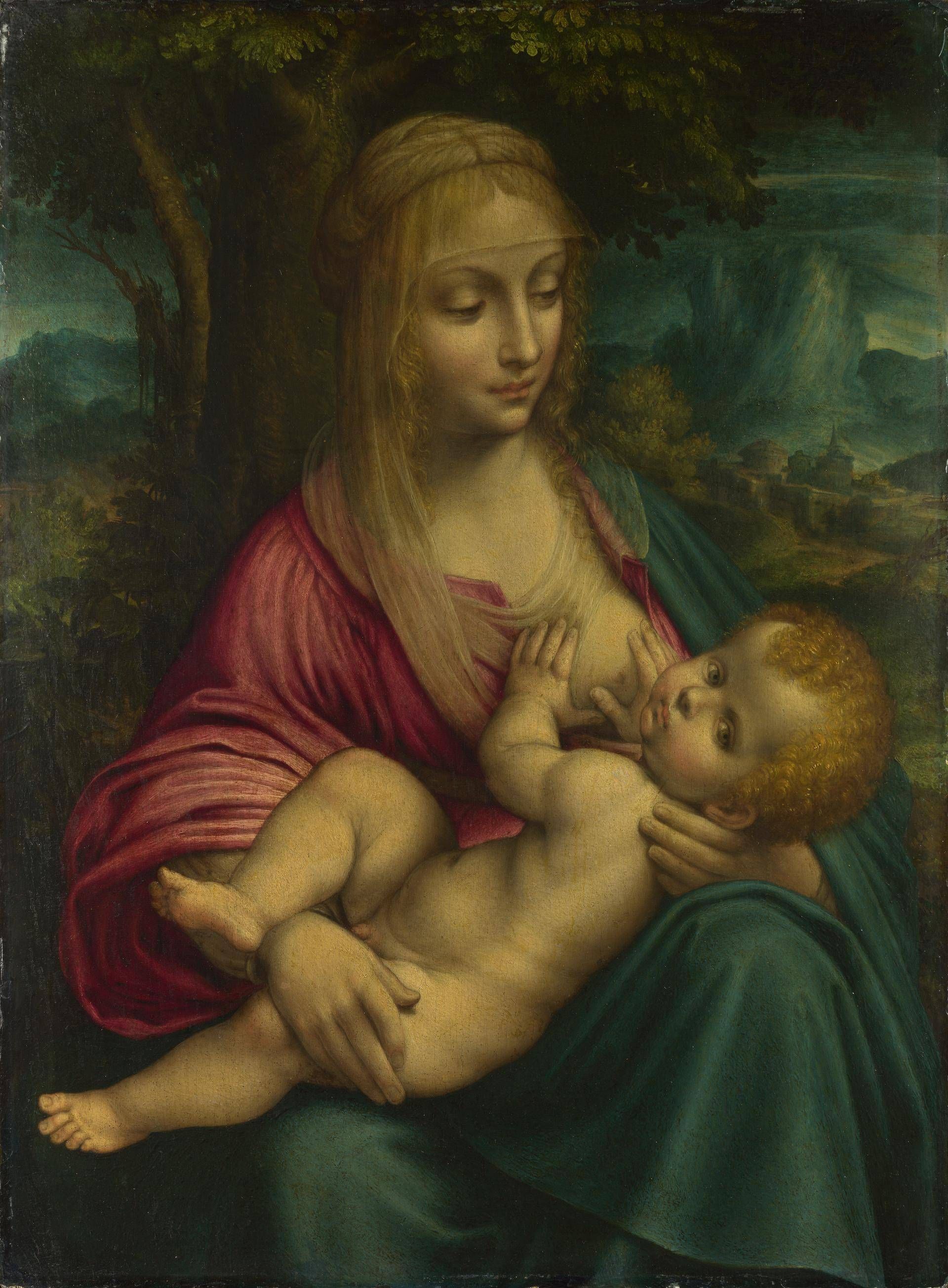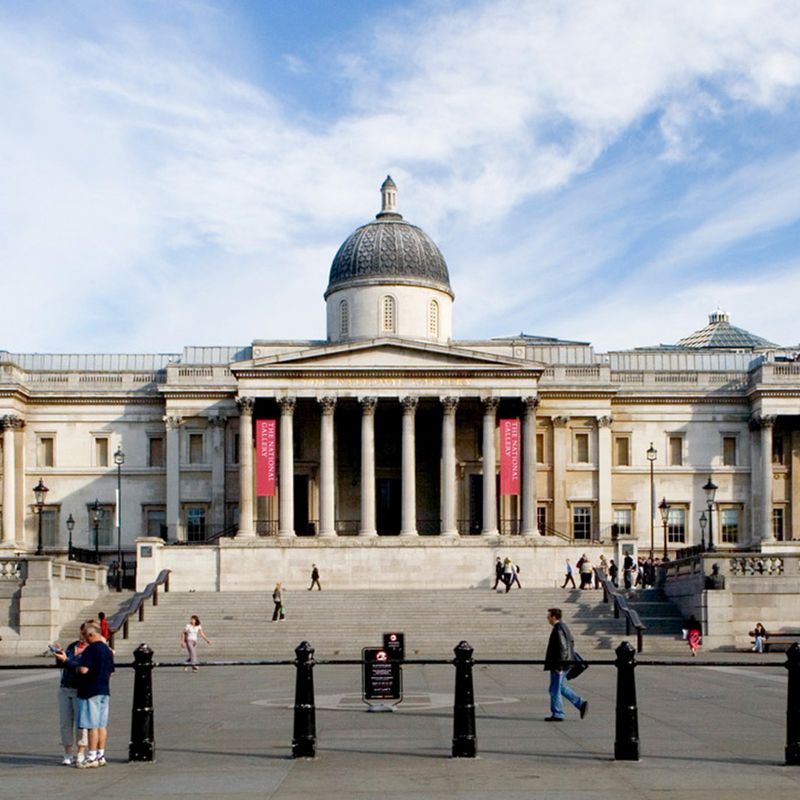
The Virgin and Child
Leonardo da Vinci is one of the most emulated and copied painters in history, and many have tried to reproduce his painting style. Several artists whose works are part of our collection - Boltraffio and Marco d'Oggiono for example - trained in his workshop in the 1490s, and were part of the so-called 'first-generation' of Leonardeschi (the term for followers of Leonardo). Some, even those who didn't train with Leonardo but did imitate his style, are identifiable because of consistency in the manner in which they followed him; many, like the artist of this picture, are not.
Paintings like this fulfilled a demand for pictures in Leonardo's style, especially in Milan after his departure in 1513, which is around the time this work was made. The multiple supple folds of the draperies, the muted colours and the generally dark atmosphere from which the figures seem to emerge are the artist's homage to Leonardo's works of the early years of the sixteenth century. The composition, however, is most closely based upon a picture made by Leonardo in the early 1490s, The Madonna Litta (State Hermitage Museum, St. Petersburg). It shows the Virgin feeding the infant Christ, his little legs wriggling as he grasps her breast in his mouth. In both images, the Virgin looks down towards her child while he gazes out at the viewer, a design also used by Boltraffio in The Virgin and Child.
In the Madonna Litta and Boltraffio's painting, the Virgin's head is placed against a dark background - a wall and a green fabric banner respectively - with views towards a vast landscape on either side. This painter copies the design, placing a large tree trunk behind the Virgin's head which is crowned by its foliage, and including views of a dramatic landscape on either side. To the right a walled town is precariously positioned on the slope of a hill in front of an improbably tall and ominous rock formation. The device of showing holy figures within a disconcertingly shady rugged landscape, as in The Virgin with the Infant Saint John the Baptist adoring the Christ Child accompanied by an Angel ('The Virgin of the Rocks'), was also a distinctive feature of Leonardo's work.
Credit: Bought, 1860
after 1510
Oil on wood
59.7 x 43.8 cm
NG1300
Image and text © The National Gallery, London, 2025
Where you'll find this

National Gallery
Permanent collection





